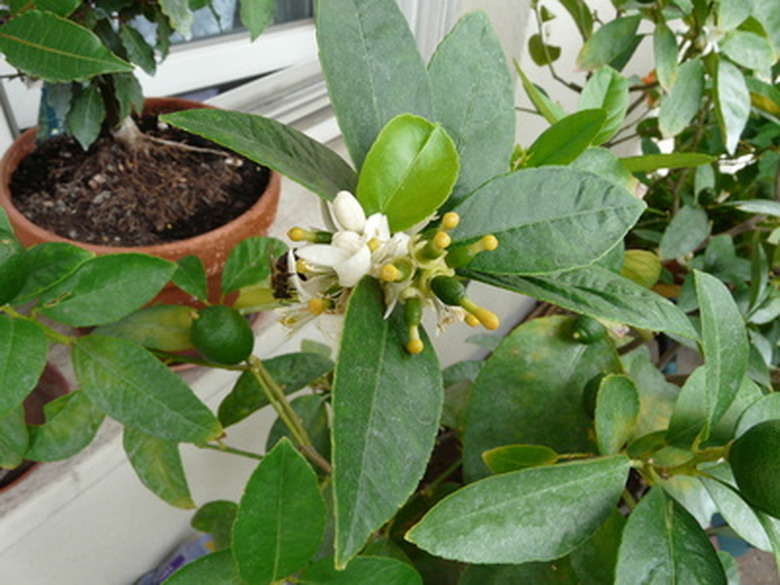Indoor Lemon Tree Care
We may receive a commission on purchases made from links.
Indoor lemon trees (Citrus x limon) not only make attractive houseplants, they're functional, producing fragrant flowers and edible fruit. Proper indoor lemon tree care allows the citrus tree to thrive. Glossy, green leaves are evergreen and provide year-round interest. Indoors, with proper pruning, lemon trees can be maintained at 3 to 5 feet tall. Lemons flower throughout the year and bear full-sized fruit approximately three to four months after flowering.
Indoor Lemon Tree Care: Soil
Indoor Lemon Tree Care: Soil
Citrus trees prosper on a somewhat sandy, all-purpose potting soil that is slightly acidic. Amending the soil with plenty of organic matter such as peat will help the soil retain moisture. The potting mix will need to be boosted with fertilizer every three to four months during a plant's active growing period. Many garden stores sell fertilizer specifically for citrus trees.
Temperature and Light
Temperature and Light
Your lemon tree needs at least six hours of sun every day. Place your lemon tree near a south-facing window or in a sunroom that receives enough direct sun. You can also supplement natural light with a grow light, especially in the winter. Be sure to rotate your tree every week or so to get even light exposure. Citrus trees flourish at temperatures between 55 and 85 degrees Fahrenheit, making them happy trees when grown indoors.
Lemon Tree Moisture Requirements
Lemon Tree Moisture Requirements
Container-grown lemon trees need more water than those planted outside. In the spring, water two to three times a week. In the summer, as temperatures rise, your lemon tree may need to be watered daily. In the winter, the watering requirements might be lower since the tree is in a resting phase with no active growth. Only water when needed to keep the soil moist.
Keep the soil moist but not soggy. A good indication of when you should water is to check the top 2 to 3 inches of soil. If it's dry to the touch, your lemon tree needs watering. Houses generally don't have the humidity lemon trees need to grow. Mist or spray your lemon tree daily or at least several times a week.
Indoor Lemon Tree Pollination
Indoor Lemon Tree Pollination
In order for your indoor lemon tree to produce fruit, it needs to be pollinated. Your lemon tree may self-pollinate, but to assure a good harvest, it's wise not to count on it. Not many of us have birds or bees inside the house, so the best way to do this is by pollinating the tree yourself. Using a cotton swab or a paintbrush, rub the inside of a flower collecting a bit of the yellow pollen. Transfer the pollen to another flower, going from flower to flower until you're done.
Pruning Indoor Lemon Trees
Pruning Indoor Lemon Trees
Don't prune your lemon tree until it is 2 to 3 years old. After that, prune to maintain its shape and keep it healthy. Don't be afraid to prune because lemon trees are incredibly hardy.
Cut off any suckers or shoots growing under the graft line. These will drain the energy from your lemon tree and inhibit fruit production. Remove any dead branches. Prune back any long branches or weak-looking stems. Remove stems that are growing toward the center of the tree. Frequent light pruning is better than occasional heavy pruning.
Controlling Lemon Tree Insects
Controlling Lemon Tree Insects
Even indoors, your lemon tree may fall prey to insect infestation. The first defense against indoor pests is to keep the tree healthy. Tiny spider mites are a common indoor pest. Because they're mites and not insects, insecticides generally aren't effective against them.
Mealybugs feed on the sap of your citrus leaves and excrete honeydew, which encourages the growth of fungus. Spraying the top and underside of your lemon tree leaves with water dislodges pests and helps eliminate infestations. Insecticidal soap is effective against mealybugs and spider mites.
